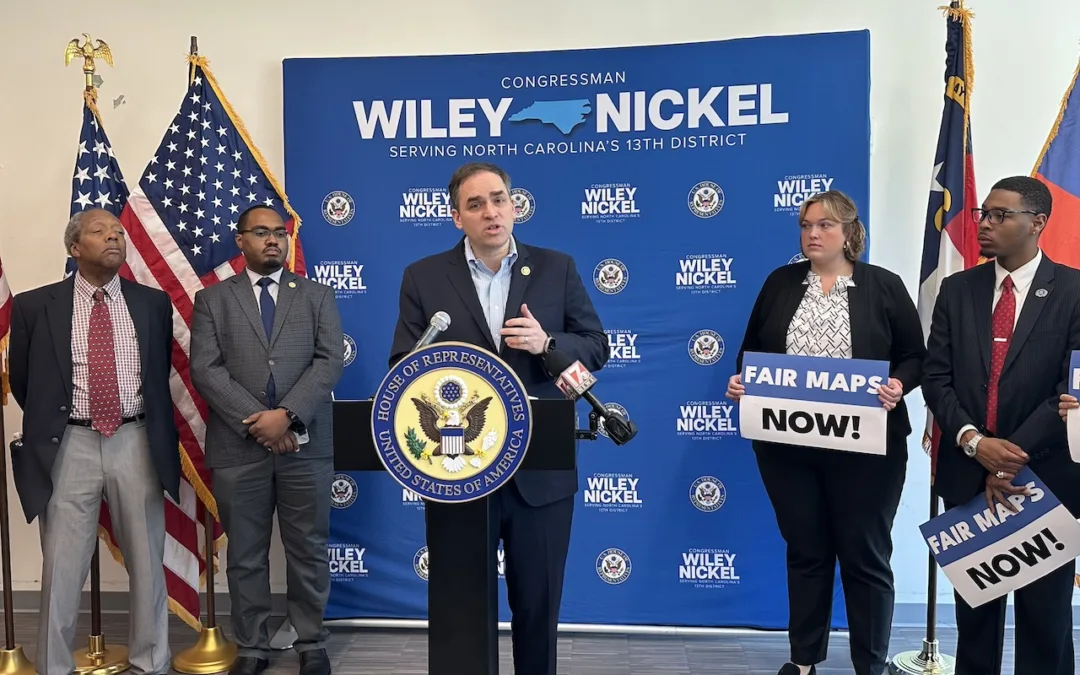
Drug prices have gotten so high in the U.S. that Utah pays to fly state workers to Mexico to purchase their drugs, gives them each a $500-per-trip bonus, and still saves tens of thousands of dollars.
Earlier this week, the state of Utah made headlines for its jaw-dropping approach to addressing the skyrocketing cost of prescription drugs. Drug prices have gotten so high in the United States that the Utah state insurance program pays to fly about 10 public employees to Mexico to purchase their drugs. Even after giving the workers a $500-per-trip bonus each, the state still saves tens of thousands of dollars.
Utah’s approach, which has saved the state about $225,000 in the year since its “right to shop” program was enacted, is emblematic of a growing trend across the country: individual states stepping up to address drug costs.
Take Pennsylvania, for example. This year, State Rep. Dan Frankel introduced legislation to create a Prescription Drug Affordability Board. The board would serve as an independent authority made up of five clinical medicine or health economics experts who would be empowered to investigate how high drug prices affect Pennsylvanians, and then determine whether or not to set price limits to reduce patients’ costs.
“I’m introducing a bill to set upper payment limits on pharmaceuticals because I want to solve the problem,” Frankel, a Democrat representing Pittsburgh, told COURIER via email.
His bill aims to address a huge issue in the state. Three out of four Pennsylvanians believe drug companies charge too much money, 67% are worried about the cost of prescription drugs, and nearly nine in 10 support government regulation of drug prices, according to a October 2018 study from the Altarum Healthcare Value Hub.
Frankel’s plan is based on similar efforts in other states. Maine and Maryland have already created Prescription Drug Affordability Boards as part of their work to lower drug costs for their residents.
These efforts, while in the early stages, could help reduce the “outrageously high” prices of some medications, said Gerard Anderson, a professor of health policy and management at the Johns Hopkins University Bloomberg School Public Health
Anderson, who sits on Maryland’s drug board, told COURIER that these boards, as well as other state-level efforts, have “significant promise.”
The skyrocketing cost of drugs in the United States has led 28% of Americans to stop taking drugs as prescribed.
Another effort that’s been gaining momentum across the country, and with good reason, is capping the price on insulin: Both Colorado and Illinois have passed legislation recently to do so. More than 7 million Americans rely on insulin to survive, and the list prices of the most commonly used insulin drugs have roughly tripled in the past decade, even though the medication is exactly the same. In 2016, type 1 diabetics paid an average of $5,705 for insulin a year, nearly double what they paid just four years earlier in 2012, according to a report from the Health Care Cost Institute.
These exorbitant costs have led many Americans to ration their insulin, which in some cases, has led to their deaths.
It’s not just diabetics who are struggling to afford their medication. According to the AARP, the annual cost of Revlimid, which treats certain types of cancer, increased from $147,413 in 2017 to $247,496 in 2017. During that same period, the cost of Aggrenox, which treats heart disease, nearly doubled from $3,030 to $5,930 per year.
The skyrocketing cost of drugs in the United States has led 28% of Americans to stop taking drugs as prescribed.
The issue has boiled over and Americans of all stripes want action. Poll after poll shows the rising cost of prescription drugs is at or near the top of voters’ concerns heading into the 2020 elections, and more than 70% of Americans believe the Trump administration, Democrats in Congress, and Republicans in Congress are “not doing enough” to reduce drug costs, according to a November 2019 survey from the Kaiser Family Foundation.
House Democrats have tried to address the issue by passing H.R. 3, which would allow the federal government to negotiate maximum prices for insulin and at least 25 other commonly prescribed, brand-name drugs without generic competition. The bill would also allow the government to negotiate price caps that are comparable to those in other developed countries, like Canada, Germany, and Japan, where people spend about half as much on prescription drugs as in the U.S.
The House passed H.R. 3 in December, but the bill has run into a brick wall of opposition in the Senate, where Majority Leader Mitch McConnell (R-KY) has refused to hold a vote on the legislation. McConnell has also blocked a bipartisan Senate bill that would address drug costs.
While McConnell obstructs drug-related legislation and President Trump calls for more or less the exact bill Democrats have already passed, drug prices continue to increase. Since Jan. 1, the prices of 498 drugs have increased by an average of 5.2 percent, according to an analysis by GoodRx.
These costs aren’t going up for any valid reason, according to Anderson of Johns Hopkins. “There’s really no justification for price increases once the drug has already been launched,” he said. “There’s no additional cost, so they are just increasing their prices to maximize profits.”
The data backs this up. From 2006 to 2015, 67 percent of drug companies increased their annual profit margins, some by as much as 20 percent.
Drug makers are free to jack up their prices because, according to Anderson, there’s no mechanism in place to keep drug prices down.
John McDonough, professor of public health practice at the Harvard T.H. Chan School of Public Health, pointed out how unusual this lack of government regulation is.
“We are the one advanced nation that does not use government or some governmentally created process to regulate the cost of new drugs and the increases over time,” McDonough told COURIER. “Ideologically, this country has said ‘we are going to let the marketplace set prices, except for public payers like Medicare and Medicaid.’”
Other countries, meanwhile, regulate their prices, which is why they spend so much less than Americans on prescription drugs.
“You go to Germany, for example, and unlike the United States, the prices of drugs never go up once they are set at the original level, unless the manufacturer can provide evidence of greater efficacy of clinical benefit,” McDonough explained. “The drug company can ask for increases in their prices, but the answer will always be ‘no,’ so they don’t even bother asking.”
Meanwhile, patients in the U.S. deal with annual price increases, which, as McDonough said, “fall like snow in January every year.”
Both Anderson and McDonough believe H.R. 3 would be a huge step forward in solving the problem, since it would control price increases and use other countries’ prices as a reference point.
Since Jan. 1, the prices of 498 drugs have increased by an average of 5.2 percent.
Government regulation of drug prices is essential, McDonough said, and it really needs to happen at the federal level due to a nearly 50-year-old law. The Employee Retirement Income Security Act of 1974 (ERISA) was passed to protect employees with benefits, but it has served to limit states’ abilities to reign in drug costs.
Under ERISA, states cannot regulate drug costs for the more than 60 percent of workers with private, employer-based health insurance plans that are self-funded. Since states also have no say over prices in the Medicare program, they can only really apply price caps to individuals who receive coverage through Medicaid, or who are commercially insured as individuals or receive commercial coverage through their small business.
“The degrees of freedom that a state has are severely limited,” McDonough said. “Congress by contrast can regulate in any or all of those arenas.”
Prescription drug affordability boards can also be even further constrained. In Maryland, for example, the board’s price caps will only cover state employees at first, as a sort of test run of how effective the board actually is.
“Assuming that the board does a reasonable job and is approved by the governor or the state legislature, then it can move onto the larger population,” Anderson said.
Despite the massive public support for federal action on drug costs, McDonough isn’t optimistic that the current Congress will address the issue and pass legislation. “But even so, if the work done this year is preparatory for moving something faster and more aggressively next year with a different Congress and White House, if that happens, then everything that is going on now will not have been for vain or in waste.”
He added: “This is the process of developing controversial, far-reaching federal legislation. It takes more than a year. It takes a lot of time and effort.”
Until then, it’s likely that state legislators across the country will fill the void, offering an array of solutions to one of America’s most pressing issues.
In Pennsylvania, Rep. Dan Frankel is trying to do just that. He is eager to advance his bill and told COURIER he wants to “get out of the mess of finger-pointing and blame that keeps getting in the way of a solution.”
Politics

This town’s response to PFAS shows how government can work
There was little federal guidance when Maysville’s water supply tested positive for dangerous ‘forever chemicals’ in 2019. So town officials acted...

Op-ed: Why we need to ban partisan gerrymandering once and for all
Some legislatures draw election maps that empower their favored voters and disenfranchise those on the other side. The “Fair Maps Act,” Congressman...
Local News

The 5 most believable UFO sightings ever reported in North Carolina
Read about five alien encounters that may forever remain unexplained. When you think of the most common places where you might hear a UFO sighting...

Good News Friday: It’s a good day to be a fan of the NC State Wolfpack
The men's and women's teams will compete for a national championship in college basketball this weekend. Plus: How to watch the solar eclipse, and...




